I have opined elsewhere that Pete Maravich should have declared independence from his father the day he graduated from high school in Raleigh, North Carolina. At LSU, Press’s boy never played a lick of defense and did not grasp what team basketball was about. If he had gone to a school such as UCLA (coached by John Wooden), Ohio State (Fred Taylor), Loyola (George Ireland), North Carolina (Dean Smith) or Kentucky (Adolph Rupp), he would have scored less but won more.
Pistol Pete—the grandson of Serbian immigrants—was in Baton Rouge in the 1968, 1969 and 1970 seasons, during which time the Tigers went 14-12, 13-13 and 22-10. They never won a Southeastern Conference championship or took part in the NCAA tournament. Such desultory results stand in contrast to the play of Maravich, a loose-limbed 6′ 5″ guard who could do more things, better, with a basketball than anybody else ever has. Thrice SEC player of the year, thrice consensus all-American and national player of the year in 1970, he was a ne plus ultra scorer: 3,667 points. Maravich took part in 84 games as a collegian and averaged a stunning 44.2 points in them. (He shot often, it is true. But he was also a wizard as a passer and dribbler, and battled for rebounds with the big boys.) Until Maravich came along, the college scoring record was 2,973 points by Cincinnati’s Oscar Robertson who played from 1958 to 1960.
Maravich—and obviously, Robertson as well—played in an era before the shot clock and the three-ball. I read somewhere that if adjustment is made for those two facts, he would have averaged around 60 points per game. I will be conservative and go with 55, which would have boosted his total to 4,620 points. Oh, but there is more. When Maravich wore the purple and gold in 1967 as a freshman, his average was 43.6 points per game. Let’s extrapolate. Again including the three-point shot and shot clock, that would have been another 55 points per game. Multiplied by 27 games, we can fairly add 1,485 more points for a very grand total of 6,105.
Who trailed Maravich entering the 2023 season? Freeman Williams of Portland State (3,249 points from 1975 to 1978), Chris Clemons of Campbell (3,225 points from 2016 to 2019), Lionel Simmons of LaSalle (3,217 points from 1987 to 1990), Alphonso Ford of Mississippi Valley State (3,165 points from 1990 to 1993), Doug McDermott of Creighton (3,150 points from 2011 to 2014), Mike Daum of South Dakota State (3,067 points from 2016 to 2019), Harry “Machine Gun” Kelly of Texas Southern (3,066 points from 1980 to 1983) and Keydren Clark of St. Peter’s (3,058 points from 2003 to 2006). All of them played four seasons, and all (other than Williams and Kelly) were free to launch three-pointers, as the NCAA did not fully adopt that rule until 1987. Paying due respect to distaff hoops, I will add that Kelsey Plum of Washington scored 3,527 points between 2014 and 2017; like Williams, Clemons, Simmons, Ford, McDermott, Daum, Kelly and Clark, she played in more games than Maravich—139 to his 84.
Note also that Williams et al. played at small schools in obscure conferences, so the competition was fairly weak. I had never heard of Campbell University before researching this article. It is located in Buies Creek, North Carolina, and they are known as the “Fighting Camels.” Not to be too snarky about it, but that is a long way from the college basketball big time. If you want to rack up lots of points, best to matriculate at a small school off the beaten path.
Now, however, a new man has barged into this elite group, and I refer to Antoine Davis, a native of Bloomington, Indiana. His father, Mike, spent a decade as an assistant and head coach of the IU Hoosiers before moving on to Alabama-Birmingham and Texas Southern. Davis fils originally signed with Houston but reconsidered and followed his dad north to Detroit Mercy. Maravich and Davis have more in common than prolific scoring; both played college ball for their fathers. The 6′ 1″ guard wasted no time in filling it up with 32 points in his debut game, against Western Michigan. During Davis’ career, the Titans compiled records of 11-20 (2019), 8-23 (2020), 12-10 (2021), 14-16 (2022) and 14-19 (2023). Look closely and you will see that he played five full seasons. I do not know why, but the NCAA gave “student-athletes” a freebie season during the COVID pandemic, and he gladly took it. He averaged 25.4 points per game—excellent compared to most college players, but the issue here is the greatest scorers of all time. (Wilt Chamberlain of Kansas, Elvin Hayes of Houston, Lew Alcindor of UCLA, Calvin Murphy of Niagara, Rick Mount of Purdue, Austin Carr of Notre Dame, Larry Bird of Indiana State and some already listed averaged more than any stinking 25.4 PPG.) Maravich’s 44.2 really puts that in the shade. If 55 points per game is a fair guess about what the Pistol would have done with the three-point line and shot clock, his numbers more than double those of Davis!
Again, Maravich played three varsity seasons while Davis had five. He was in 61 fewer games, so I hope it is clear that this is a classic apples-and-oranges situation. Further extrapolation is necessary. If Maravich had played five collegiate seasons—as has Davis—another 1,485 points (27 times 55) must be added to his total. In such a case, LSU’s favorite son would have had an otherworldly 7,590 points. The point (no pun intended) is that Maravich was and remains in a class of his own. I have seen a video of Davis as a UDM Titan, and I must say he is a scintillating player, and he may succeed in the NBA. (If he’s short, so is Trae Young, and he has done quite well with the Atlanta Hawks the last five years.) But in comparison to Maravich, Davis is the merest pretender.
He received some media attention during the 2023 season as he approached Maravich’s record. In fact, he seemed sure to break it before Detroit Mercy lost to Youngstown State on March 3 in the quarterfinals of the Horizon League’s post-season tournament. Needing 25 points to tie Maravich and 26 to top him, Davis went cold: 7 of 26 from the field, for 22 points. He was left three points shy, ending his career with 3,664. His final shot, just before the buzzer, clanked off the rim. It was, of course, from downtown. Basketball purists might regard Davis as a fine example of what is wrong with the sport; of the 2,987 shots he took during his five-year career, about 1,600 of them were the three-ball.
Davis and his coach-father have graciously paid tribute to Maravich’s iconic status and acknowledge the numerous caveats needed to bring him so close to breaking the college scoring record. I find their denial that the 2023 season was anything but a mad rush to reach and exceed 3,667 ingenuous.
In the years before his death in 1988, Pete Maravich had matured and evolved; a truer Christian could hardly be found. He sometimes looked askance at his basketball achievements at LSU and his 10 years as a pro (he averaged 24.2 points per game for the Atlanta Hawks, New Orleans/Utah Jazz and Boston Celtics), so it is quite possible that he would have taken the records-are-meant-to-be-broken stance and cheered on the Detroit Mercy star.
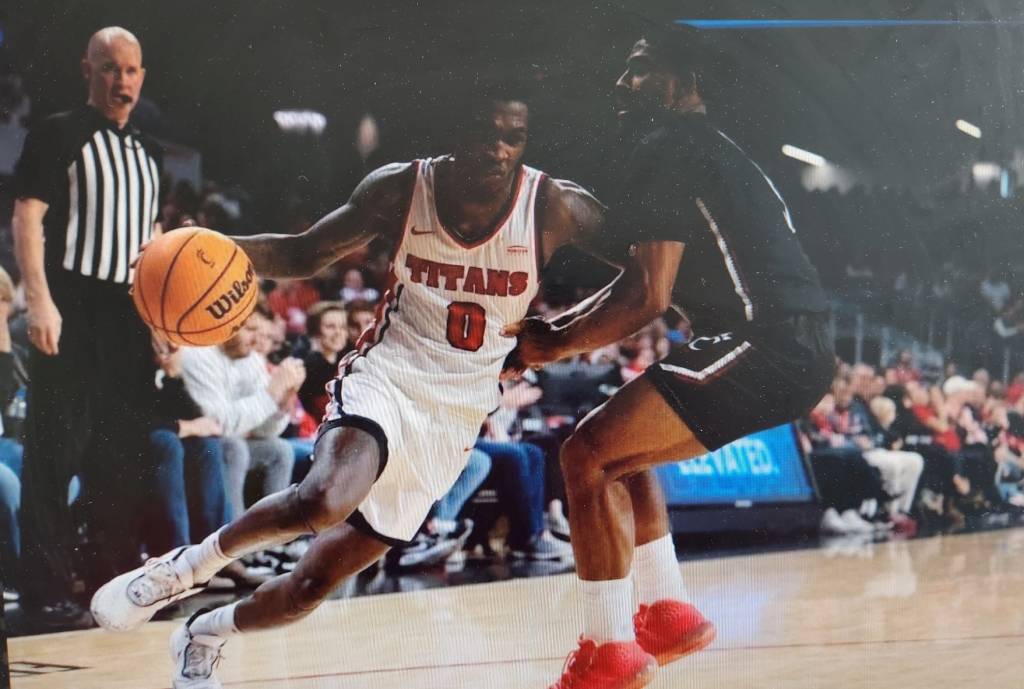
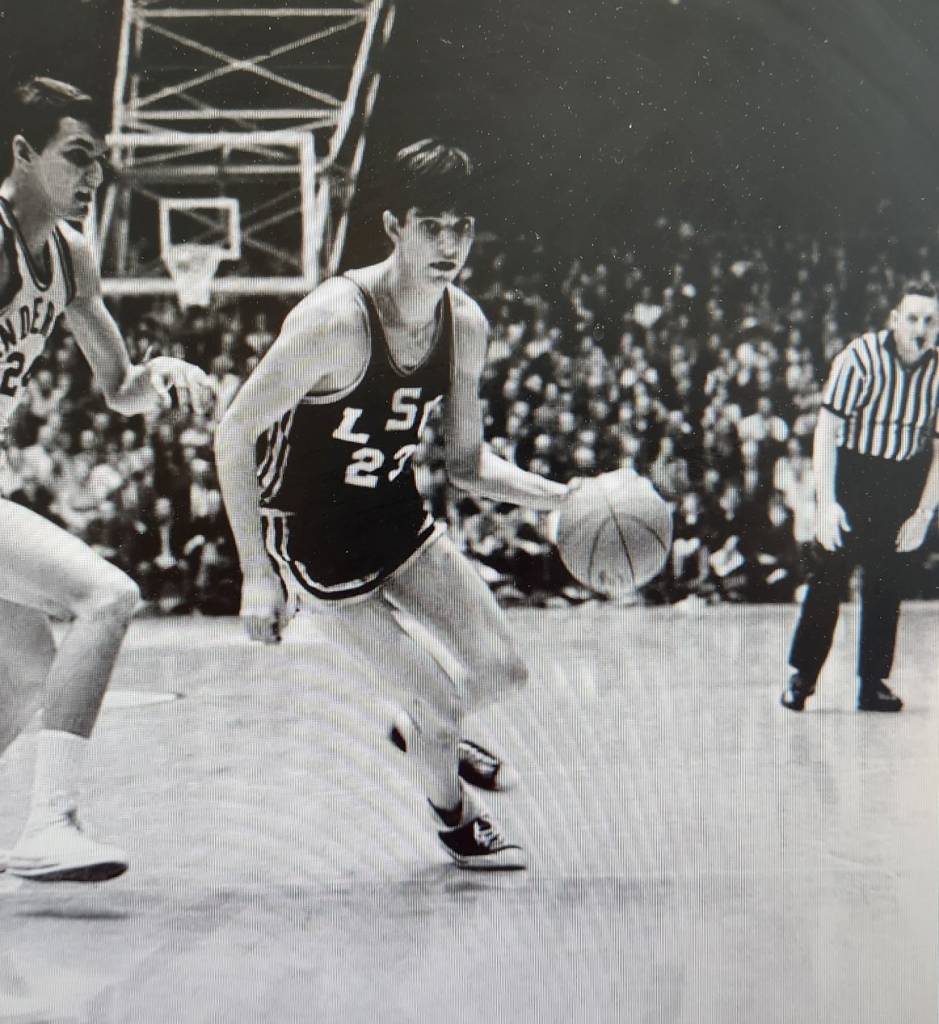
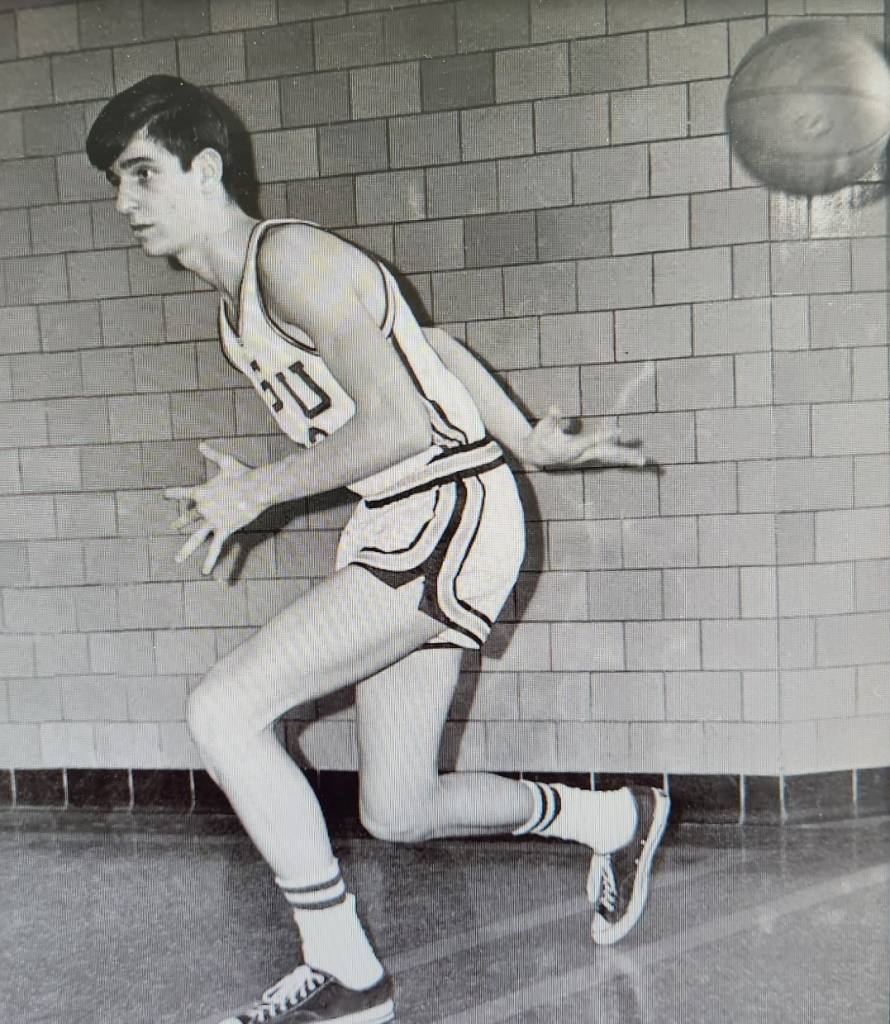

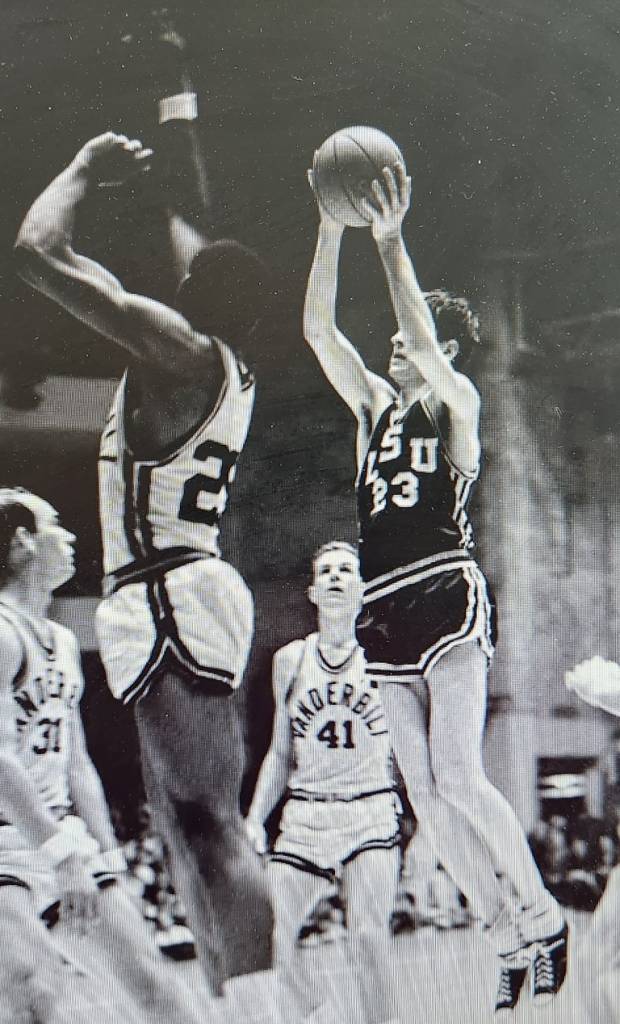

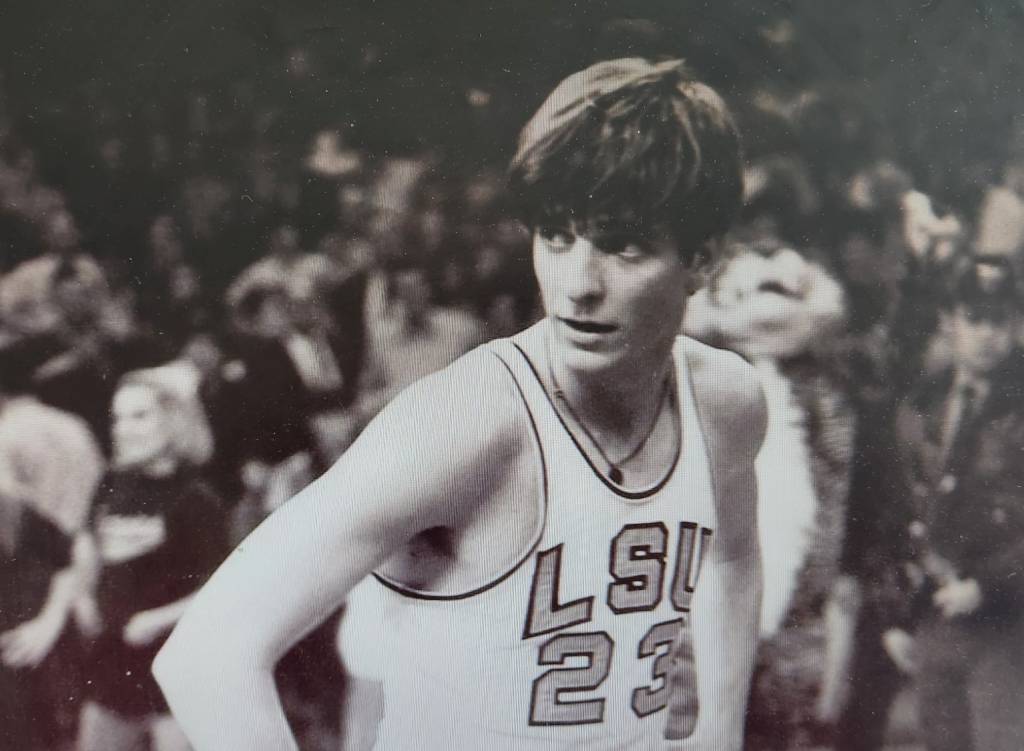



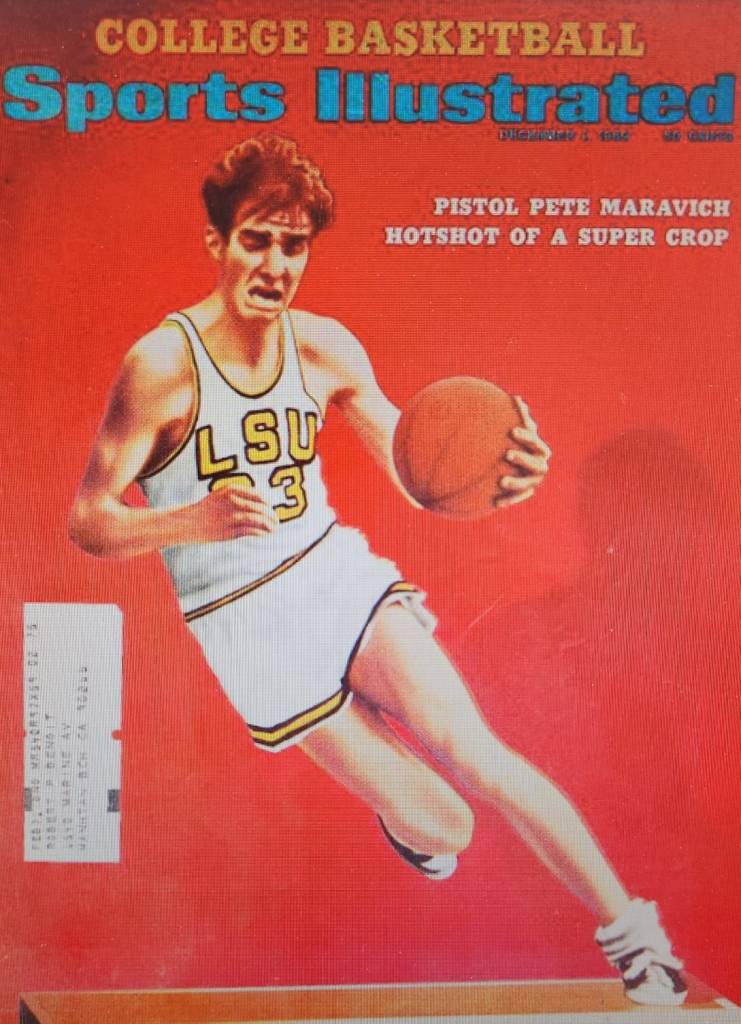


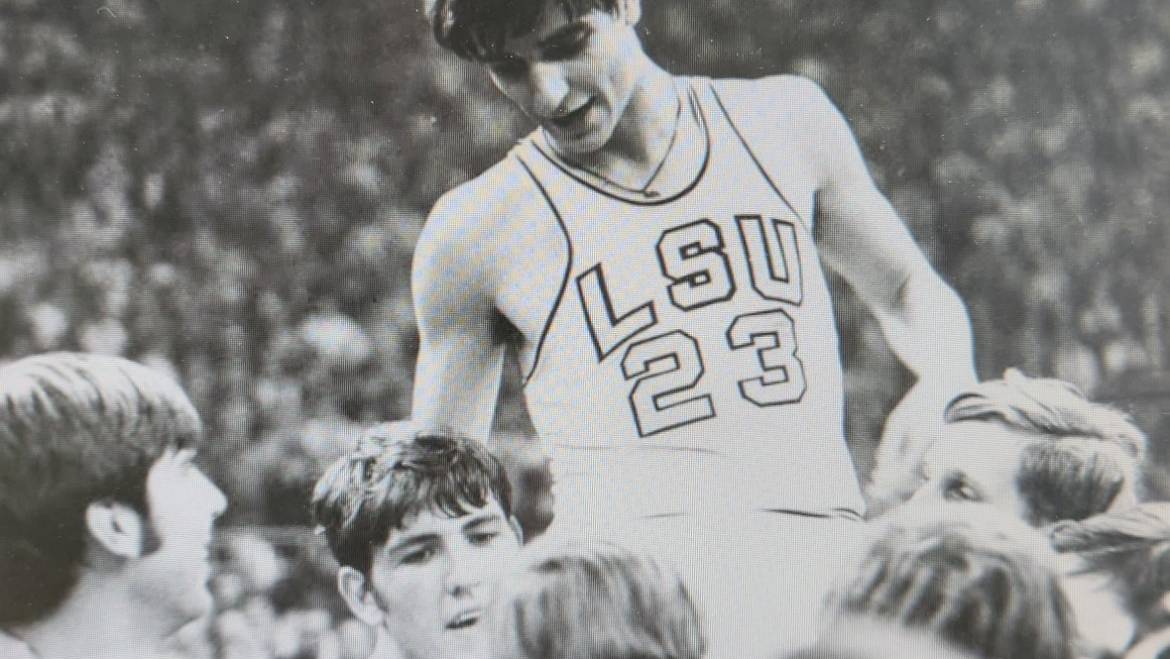
2 Comments
Excellent piece, RAP. Pistol’s three seasons with LSU will never be equaled. The wizard of the hardcourt was a one-man show in Red Stick where his passes and ball-handling – no stats can be kept of those areas of skill – made the other nine men wish they had eyes in the backs of their skulls. Kriegel’s excellent biography (“Pistol: The Life of Pete Maravich”) tells nearly everything – good and bad – one could want to know of this all-too-short life. One thing is for certain: Pistol died a solid Christian in the company of other believers. Amen.
I read it, Darrell.
Just amazing how Maravich came to see his basketball-superstar years, all the cheering, the adulation…totally hollow. Toward the end, he had true perspective.
Add Comment